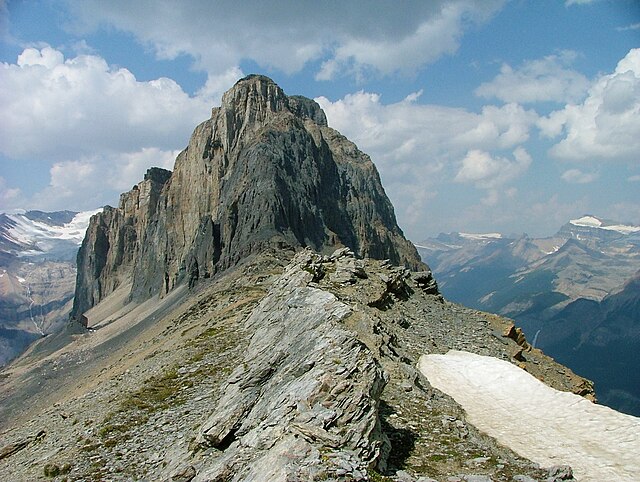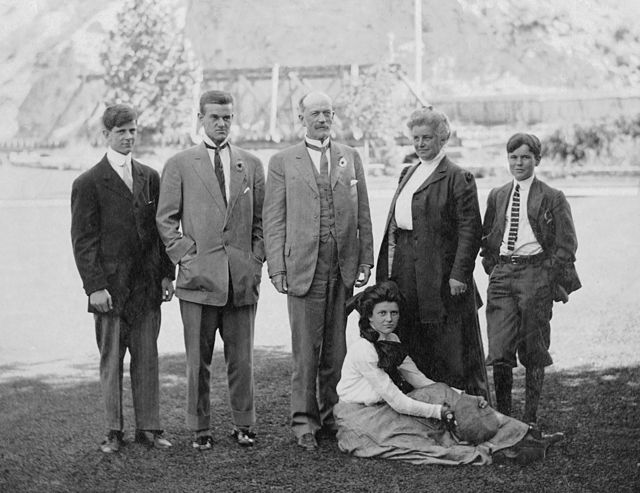The Phyllopod bed, designated by USNM locality number 35k, is the most famous fossil-bearing member of the Burgess Shale fossil Lagerstätte. It was quarried by Charles Walcott from 1911–1917, and was the source of 95% of the fossils he collected during this time;
tens of thousands of soft-bodied fossils representing over 150 genera have been recovered from the Phyllopod bed alone.
Fossil Ridge forms the spectacular backdrop to the Phyllopod Bed
Walcott and his team collecting from the Phyllopod bed, c. 1913
A page of Walcott's field notebook, depicting some familiar fossils from the Phyllopod bed
Charles Doolittle Walcott
Charles Doolittle Walcott was an American paleontologist, administrator of the Smithsonian Institution from 1907 to 1927, and director of the United States Geological Survey. He is famous for his discovery in 1909 of well-preserved fossils, including some of the oldest soft-part imprints, in the Burgess Shale of British Columbia, Canada.
Charles Doolittle Walcott
Charles Doolittle Wallcott in 1873
Charles excavates the Burgess Shale (near Field, British Columbia) with his daughter and son, in the quarry which now bears his name.
Charles Doolittle Walcott and his family in Provo, Utah, around 1907. Walcott often took his family along on collecting trips. Click on the photo for more information about the Walcotts.






